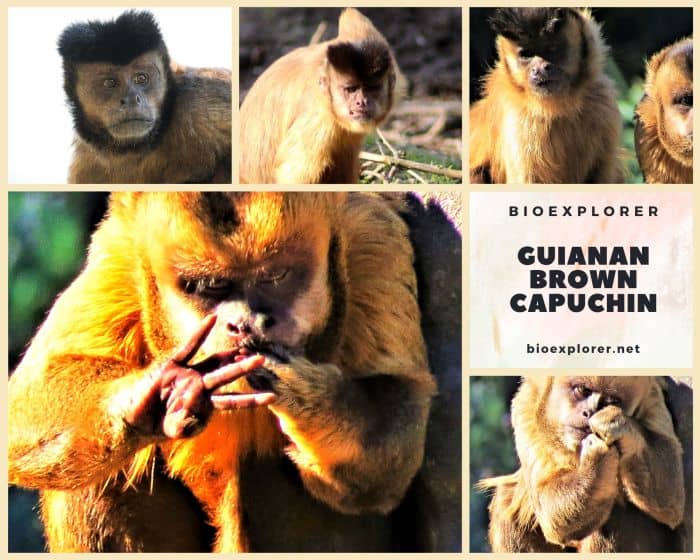
| Animalia | Primates | Cebidae | Sapajus | Sapajus apella |
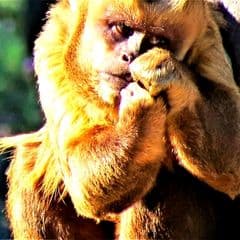

- Common Names: Guianan Brown Capuchin, Pin Monkey, Black-headed Capuchin, Tufted Capuchin
- Taxonomy Classification Year: 1758
- Monkey Size: 32 to 57 cm (13 to 22 in)
- Skin Color(s): Brownish-gray
- Habitat: Forest, rainforest, mountains
- Diet: Omnivorous
- Native Countries: Margarita, Trinidad and Tobago
Guianan Brown Capuchin Distribution
Guianan Brown Capuchin Characteristics
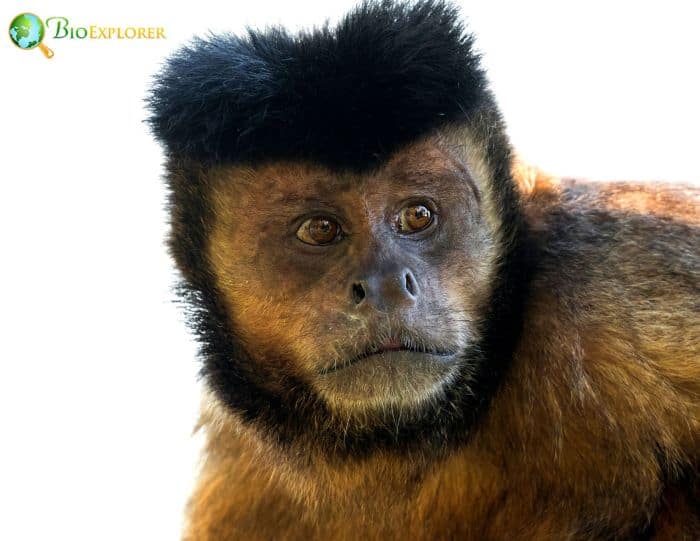
The tufted capuchin[1] (Sapajus apella), also called the pin monkey, Guianan brown capuchin, or black-headed capuchin is a New-World monkey native to South America and the Caribbean islands of Margarita and Trinidad.
- Brown capuchin monkeys range in color from tan to mustard yellow to black. On the top of the head is a patch of thick black fur that is sometimes called a cap.
- The fur is brownish gray, with the underbelly and shoulders slightly lighter than the rest of the body.
- Above the ears, the black hairs form tufts of fur, giving the species one of its alternate common names, tufted capuchin monkey.
- Facial patterns vary from individual to individual, but the black sideburns extending from the crown of the head are characteristic of the Cebus apella.
- The hands, feet, and tail are black or dark brown. The tail is prehensile and long. This species is stocky and robust.
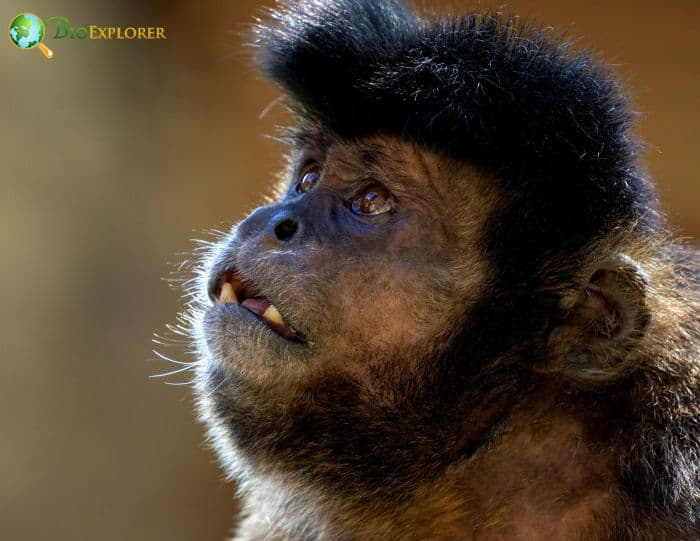
What Do Guianan Brown Capuchins Eat?
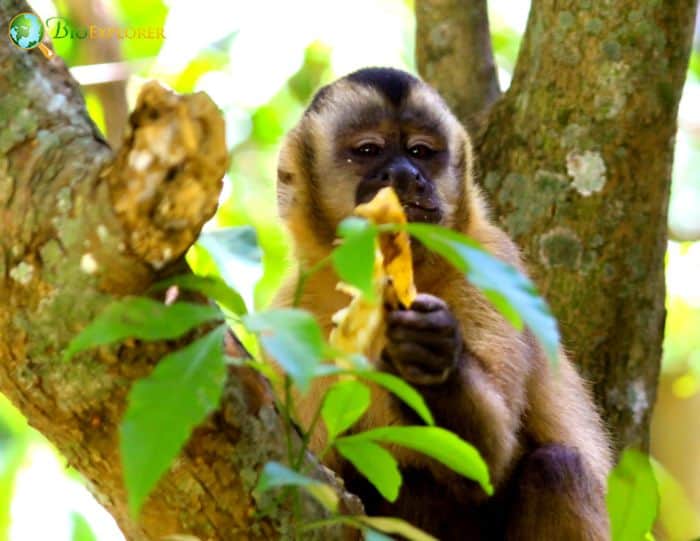
Based on obervations and researches, the Guianan Brown Capuchin feeds on[¶]:
- Johnnyberry (miconia)
- Wild Coffee (Psychotria)
- Bread And Cheese (Paullinia).
- Queen Palm (Syagrus romanzoffiana).
- Punchberry (Myrcia splendens)
- Hollies (Ilex)
- Higuillo (Piperer dilatatum)
- Jamaican Nettletree (Trema micrantha).
- Sweetwood (Ocotea)
- Sweetwood (Nectandra)
- Lyre Gurnard (Piper)
- Abas (Psidium guajava)
- Moena (Ocotea aciphylla)
- Bay (Persea)
- Nightshade (Solanum)
- American Black Nightshade (Solanum americanum).
- Myrsine (Myrsine)
- Cattley Guava (Psidium cattleianum).
- Leathery Colicwood (Myrsine coriacea).
- Black-Sage (Cordia polycephala)
- Scratchbush (Urera baccifera)
- ‘Awapuhi-Ke’oke’o (Hedychium coronarium)
- Cargadera Blanco (Annona danforthii).
- Cedre Gris (Ocotea puberula).
- Winter’s Bark (Drimys winteri).
- Largeleaf Lantana (Lantana camara).
- Sweetleaf (Symplocos)
- Crackopen (Casearia sylvestris)
- Soldierbush (Tournefortia)
- Gumtree (Sapium glandulosum)
- Iguana Hackberry (Celtis iguanaea).
- Blolly (Guapira)
- Hoja Menuda (Siphoneugena densiflora).
- Pearl Laceleaf (Anthurium scandens).
- Fuchsia (Fuchsia)
- Sweetwood (Nectandra membranacea)
- Pricklyash (Zanthoxylum)
- Attorney (Clusia)
- Mistletoe (Phoradendron)
- Higuillo De Hoja Menuda (Piper aduncum).
- Conejo (Protium tenuifolium)
- Hogplum (Spondias mombin)
- Palo De Gallina (Alchorneopsis floribunda).
- Laurel Espada (Ocotea floribunda).
- Black Manwood (Minquartia guianensis).
- Pachiuba (Socratea exorrhiza)
- Matchwood (Schefflera morototoni)
- Seasonvine (Cissus verticillata)
- Bara (Guatteria longicuspis)
- Poroto Shimbillo (Inga brachyrhachis).
- Scarlet Passionflower (Passiflora coccinea).
- Fourleaf Buchenavia (Buchenavia tetraphylla).
- Icecreambean (Inga edulis)
- Cuero De Rana (Laetia procera).
- Maripa Palm (Attalea maripa).
- Guiana Brosimum (Brosimum guianense).
- Pacae Colorado (Inga alba).
- Amarillo (Guatteria punctata)
- Rabo De Ranton (Casearia aculeata).
- Wild Balata (Micropholis guyanensis).
- Bulletwood (Manilkara bidentata)
- Jamaican Cherry Fig (Ficus americana).
- Mata Palos (Ficus amazonica).
- Trichilia (Trichilia)
- Inga Grande (Inga alata).
- Fig (Ficus)
- Abiu (Pouteria caimito)
- Caucho Rubber (Castilla ulei).
- Chalahuite (Inga acrocephala)
- American Muskwood (Guarea guidonia).
- Guamo (Inga acreana)
- Breadnut (Brosimum alicastrum)
- Maraximbé (Trichilia tuberculata)
- Figueira-Acreana (Ficus sphenophylla)
- Hinchahuevos (Sapium laurifolium)
- Chonta (Astrocaryum gratum)
- Corojo (Acrocomia aculeata)
- Urucuri Palm (Attalea phalerata).
What Eats Guianan Brown Capuchins?
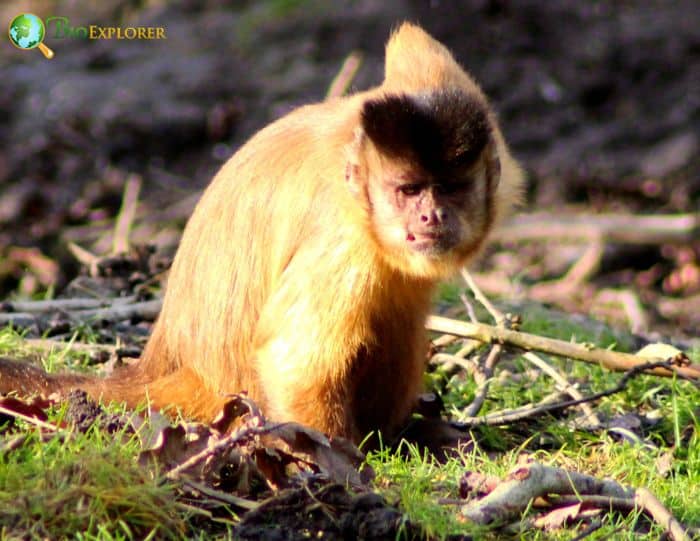
Guianan Brown Capuchins are predated by Ocelots (Leopardus pardalis), jaguars (Panthera onca) and Cougars (Puma concolor) in the wild[§].
Guianan Brown Capuchin Facts
- Brown capuchin monkeys have deep lower jaws and large jaw muscles to accommodate a diet of large fruit and rough vegetation.
- Cebus apella is the only capuchin monkey species that carries its tail in a tight curl.
- The brown capuchin monkey is a diurnal and arboreal primate species but often forages on the ground or walks longer distances between trees too far apart to jump.
- The dominant male and the troop members have the privilege of eating first when food is scarce, while the subordinate monkeys must wait until they are ready.
- The natural enemies of these capuchins are the large birds of prey. They are so afraid of these birds that they will be alarmed even if a harmless bird flies by.
Suggested Reading: Monkey Breed Names
Cite This Page
APA7MLA8Chicago
BioExplorer.net. (2025, December 20). Guianan Brown Capuchin. Bio Explorer. https://www.bioexplorer.net/animals/mammals/monkeys/guianan-brown-capuchin/.
BioExplorer.net. "Guianan Brown Capuchin" Bio Explorer, 20 December 2025, https://www.bioexplorer.net/animals/mammals/monkeys/guianan-brown-capuchin/.
BioExplorer.net. "Guianan Brown Capuchin" Bio Explorer, December 20 2025. https://www.bioexplorer.net/animals/mammals/monkeys/guianan-brown-capuchin/.











